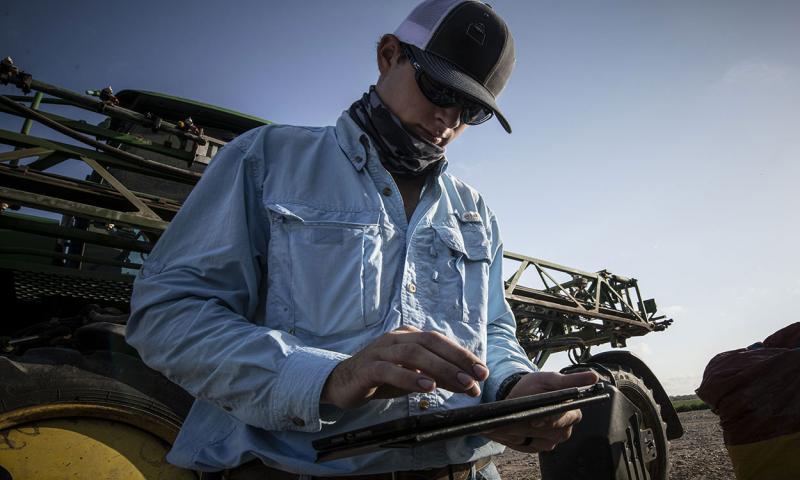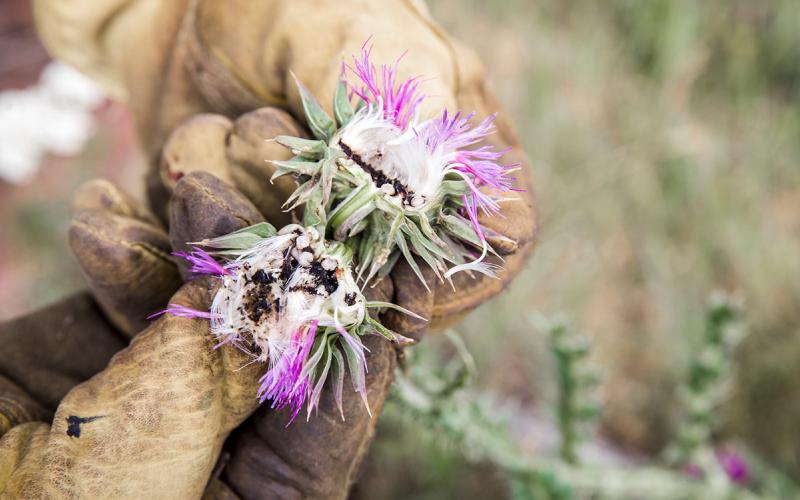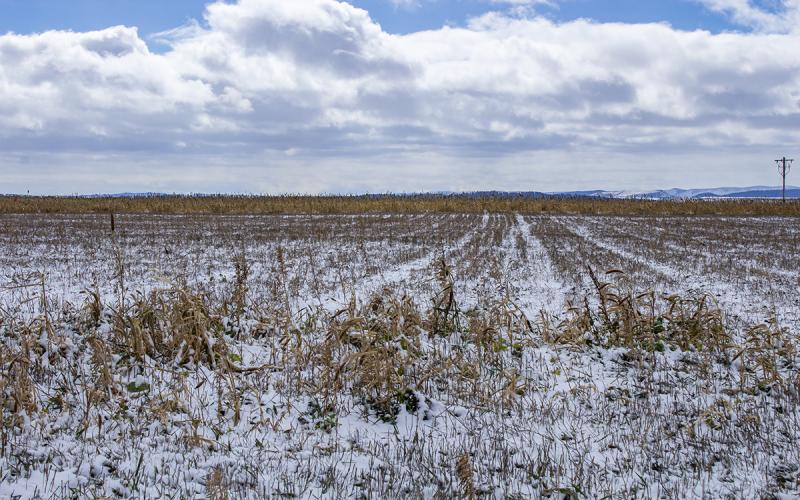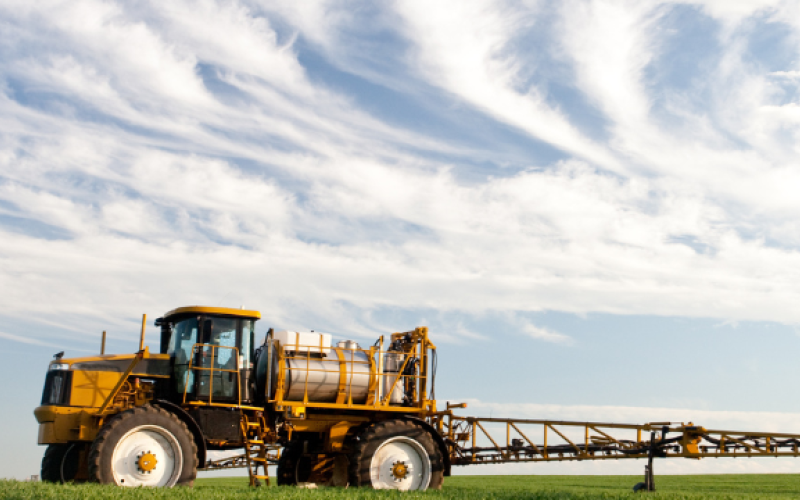
Written collaboratively by Eric Jones, Philip Rozeboom, Adam Varenhorst, Madalyn Shires, Stephen Robertson, Jill Alms, and David Vos.
Pesticides need to be applied at proper rates to ensure effective control of the pest. If too little product is applied, the pest will not be controlled. If too much product is applied, the pest will be controlled but other undesirable and unintended consequences may occur. Pesticides need to be added to the spray tank at the correct amount as well as the correct spray output for efficacy and safety.
Pesticide Mixing Equation
Pesticides should be measured out with clean containers. Liquid-formulated pesticides should be measured with a container with graduations (marks showing the amount poured in) to ensure that the correct amount is being added to the spray tank. Dry-formulated pesticides should be weighed using a quality scale to ensure the correct amount is being added to the spray tank.
The following equation is used for general pesticide mixing.

Below is a detailed illustration of how the units are cancelled out and the amounts are derived.

A detailed example of calculating the correct amount of pesticide is provided below.

The amount of pesticide to add can be converted to other units if the measurement is more convenient or intuitive.
The equation is the same when mixing a dry formulation of a pesticide. Be sure to use the correct units. A detailed example is provided below.

Sprayer Calibration Equation
Before calibrating your sprayer, be sure the sprayer is in working order without leaking fittings and/or nozzles and that your tank/lines are clean. When catching water from the nozzle, wear proper protective equipment, and only use clean water when calibrating the sprayer.

Below is a detailed illustration of how much water is to be collected if the desired output is 15 gallons per acre applied at 10 miles per hour with a nozzle spacing of 20 inches. The “5940” of the equation is a constant value taking into consideration all the variables rather than having to do extensive math and cancel out units.

The amount of water to be caught can be divided by four to determine the amount of water to be caught in 15 seconds. The amount of water to catch can be converted to other units if the measurement is more convenient or intuitive. Collect water from each nozzle for the appropriate time period to ensure that all nozzles are working properly. A nozzle should be replaced if the output is ±10% of the desired output.
If the desired output is unknown, one can use the output (gallons per minute) collected to determine the current output (gallons per acre) of the sprayer. The equation described above can be rearranged, and a detailed illustration is below.

Sprayers should be calibrated after long periods of storage, changes in nozzle types/pesticides, drastic weather changes, and periodically to ensure the correct about of product is being applied.


